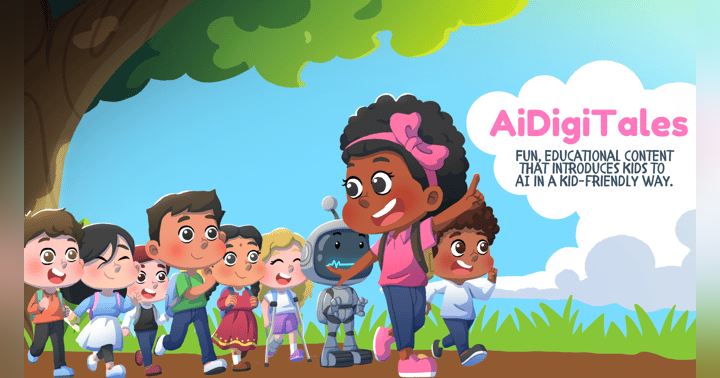Exploring AI, Equity, and Ethical Education with Stacy Kratochvil
Artificial intelligence (AI) is becoming an important topic in education, and educators like you are navigating its benefits, challenges, and ethical considerations. In a recent episode of My EdTech Life, I had the privilege of speaking with Stacy Kratochvil, an instructional technology coordinator from the San Francisco Bay Area. With 18 years of teaching experience, Stacy transitioned from physical education and dance to ed tech, driven by her passion for supporting educators and students during the shift to online learning.
Stacy’s journey into instructional technology began during the pandemic, a time when rapid changes required quick adaptation. She embraced professional development opportunities, including training at the Krause Center for Innovation, to expand her expertise. Her dedication has made her a trusted voice in AI education, sharing practical resources and strategies on LinkedIn and through collaborations like the Human Intelligence Movement.
Ethical AI and the Role of Teachers
One of the key takeaways from this episode is Stacy’s focus on preparing educators to navigate AI responsibly. She emphasizes the importance of understanding ethical considerations like bias, data privacy, and the environmental impact of technology. Stacy’s message to educators is clear: these issues are essential to discuss, whether you're using AI tools in the classroom or preparing students for a tech-driven world.
Stacy shared an example of a teacher who facilitated a student-led discussion on AI ethics. Using a fishbowl format, students explored topics such as bias and guardrails for AI use, encouraging critical thinking and respectful debate. Even if your school lacks access to advanced AI tools, this activity shows how you can engage students in meaningful conversations about the broader implications of AI.
Supporting Teachers Through Innovation
Recognizing the challenges teachers face in adopting new technologies, Stacy created an AI fellowship program to provide educators with practical tools and resources. This program combines asynchronous learning with opportunities to explore ethical AI practices and improve lesson design. A central question guided the program: “How might we use AI to become more humanizing teachers?”
This approach encourages you to think beyond the tools and focus on how technology can support equity, inclusion, and meaningful connections in the classroom. By tying AI to broader educational goals, Stacy demonstrates how you can align new technologies with the values and objectives of your school or district.
Actionable Insights for Educators
If you’re looking to integrate AI into your teaching, here are a few practical steps Stacy shared:
- Start Small: Focus on simple, specific ways AI can support your current teaching practices. For example, use AI to generate ideas for lesson plans or to create examples for classroom discussions.
- Address Ethical Concerns: Introduce students to the ethical implications of AI through case studies, classroom discussions, or activities that evaluate AI-generated content.
- Foster Critical Thinking: Prioritize activities that build your students’ ability to analyze, question, and evaluate information from AI tools.
- Align with Goals: Tie your AI use to existing school or district priorities, such as equity or human-centered teaching practices.
Conclusion
This episode of My EdTech Life highlights the need for thoughtful and intentional use of AI in education. Stacy’s work serves as a reminder that while AI offers exciting opportunities, your role as an educator is to ensure these tools align with ethical standards and enhance human connection.
If you’re ready to explore how AI can fit into your teaching while maintaining a focus on equity and ethics, Stacy’s experiences provide valuable inspiration. Be sure to listen to the full episode for actionable strategies and insights that can help you navigate the future of AI in education.
Become A My EdTech Life Podcast Partner! For as little as $3.00 dollars a month, you can help support the podcast. You can cancel anytime, but your contribution goes a long way.










